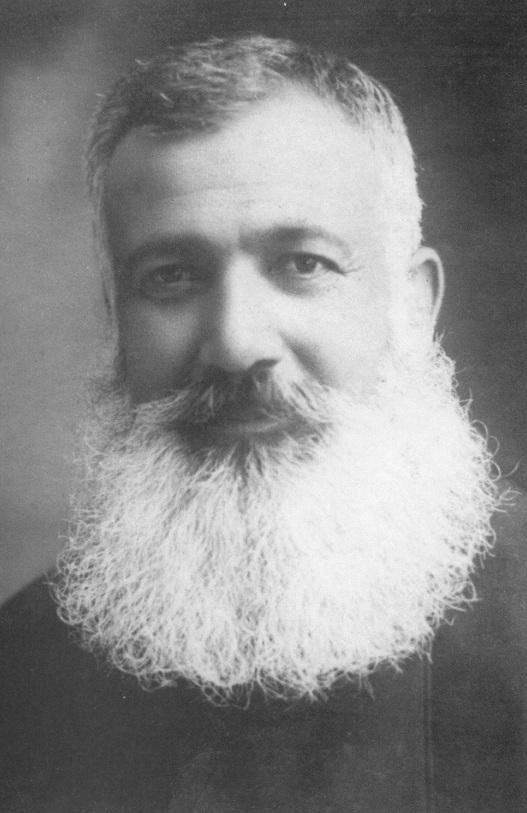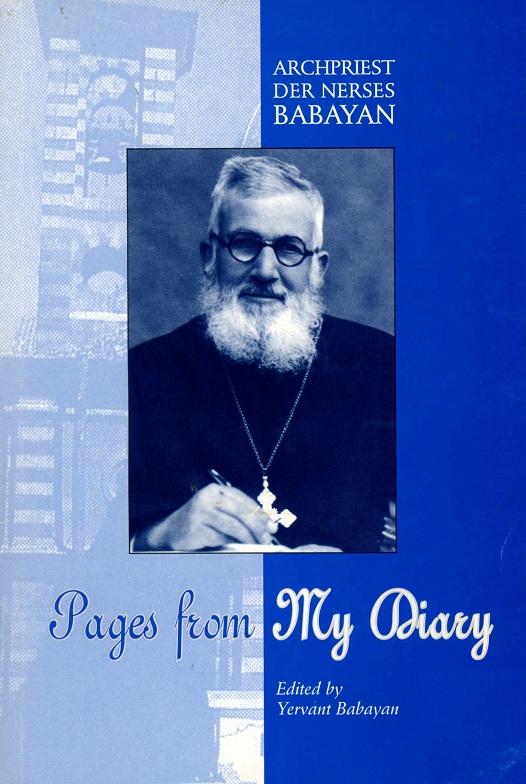L'auteur | |
 | Born in Aintab, Turkey, in 1887, son of Sarkis and Yester who were also born in Aintab. His grandfather, Kevork, had moved from Sassoun and had settled in Aintab around the middle of the 19th century. His father was killed by the Turks in 1896 at the age of forty. His mother, having mastered the art of Aintab needlework, has worked day and night to support the family. Father Nerses received his elementary education in Haigazian school of Aintab, and his secondary education in Atenagan School. Being a gifted student, his education expenses were provided by the Trustees of Atenagan school. Upon graduation, he served as teacher in the Haigazian school of Aintab, his Alma Mater, for three years. During his tenure in Haigazian, he befriended Dr. Shepard, the Chief of Staff of the American Hospital of Aintab, and by the personal intervention of Mrs. Shepard, he was admitted to St. Paul College of Darson to continue his education. Following the decision to become a member of the clergy, he moved to Jerusalem and continued teaching and at the same time started his theological studies. Father Nerses returned to Aintab in 1910 and was appointed as the principal of Jeebin village school. A well-known intellectual and a long time school principal, Mr. Krikor Bogharian has made the following comments about Father Nerses: "During his tenure in the village of Jeebin, he planned and executed brilliant undertakings, including renovations and new construction projects: which have collectively become instrumental in educating and enlightening the otherwise unsophisticated local population. I have served on several boards with him for twenty years. His pleasant and soft spoken personality, calm and dependable behavior have earned him the admiration and support of the people." Father Nerses was married to Negdar Basmadjian in 1912 and was ordained as a priest the following year. In 1915, he was arrested and exiled with his family and the entire population of Jeebin. After the 1918 Armistice and surviving the Genocide alone with his faithful congregation, he was transported by the British Forces to Port Said, Egypt, where he continued to serve as a priest and Chairman of A.G.B.U.'s day school. Towards the end of 1919, he returned to become involved with the self-defense operations of the Armenian Aintabtzys, and assumed the chairmanship of the Central Committee responsible for war provisions. He left Aintab with the last Armenian and established residence in Aleppo, Syria, where he serves as a dedicated priest to the survivors of the Genocide for thirty years. The Armenian Church authority of Aleppo sent him on three separate occasions to the Northern Provinces of Syria for a unique mission amongst the displaced Armenians. Following the arrangements made by the Danish benefactress, Miss Karen Yeppe, and starting in 1926, for three years, he visited the Der Zor city environs to reclaim Armenians doomed for assimilation in non-Armenian homes. He has been instrumental in establishing new Armenian churches in Azaz, Hassije and Kamishly in Northrn Syria. He has been a founding member of the Guiliguian Union in 1921, and was elected Chairman in 1923. As a community leader, he served as a member of the Aleppo Board of the Azounieh Hospital of Lebanon for many years, and secured the annual wheat requirements of the Hospital from the Kamishly Armenians. During 1935 to 1951, he served as a member and as the Chairman of the Armenian National Old Age Home Board of Trustees in Aleppo, Syria, now known as Armenian Old Age Home. As a product of his efforts and with the assistance of Dr. Asadour Altoonian's wife, Mrs. Altoonian, as well as the cooperation of the Armenian Evangelical and the Catholic leadership of Aleppo, the Old Age Home became the proud owner of a three story building. He moved to Beirut in 1953 with his family, where he entered his eternal rest in 1956. |

